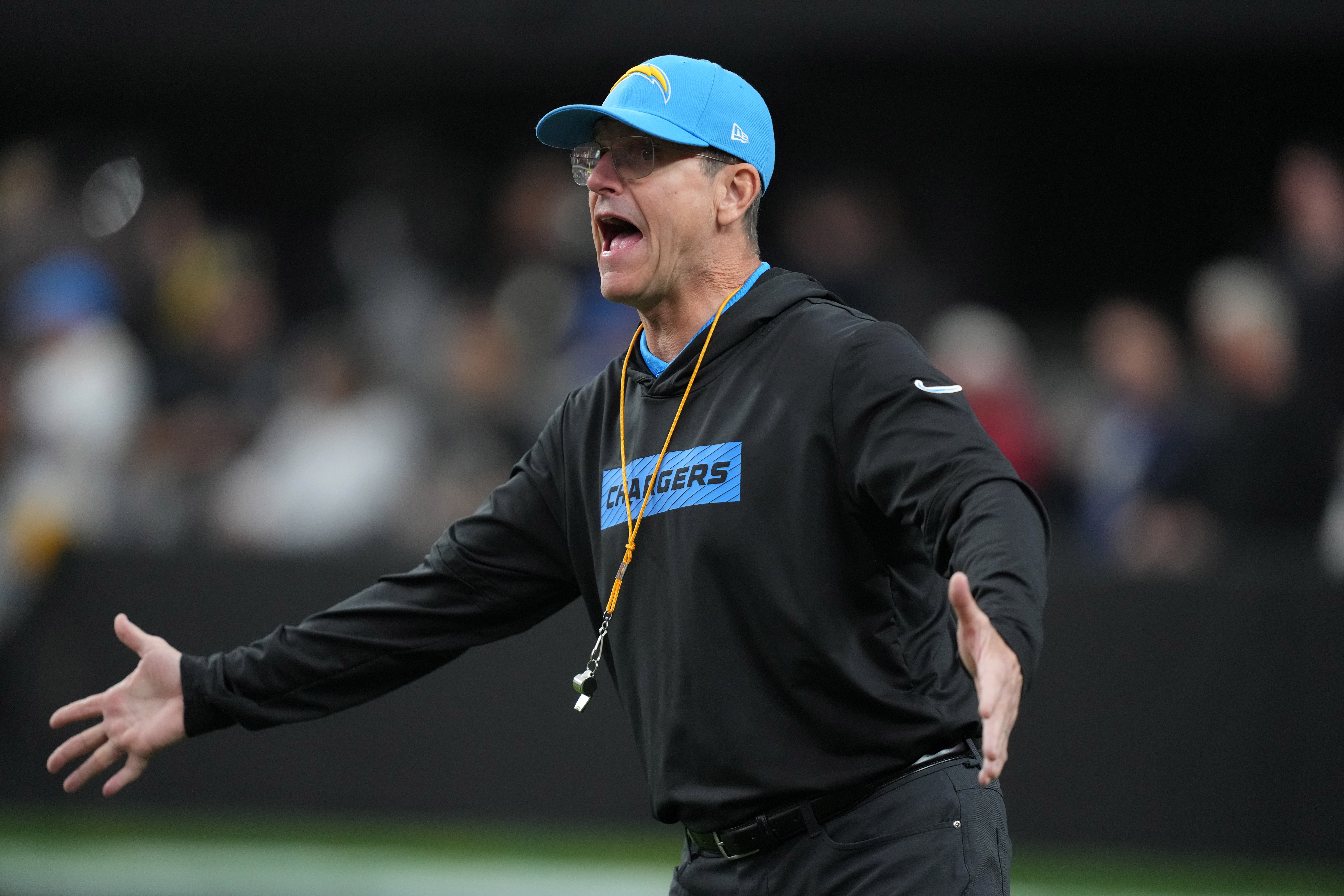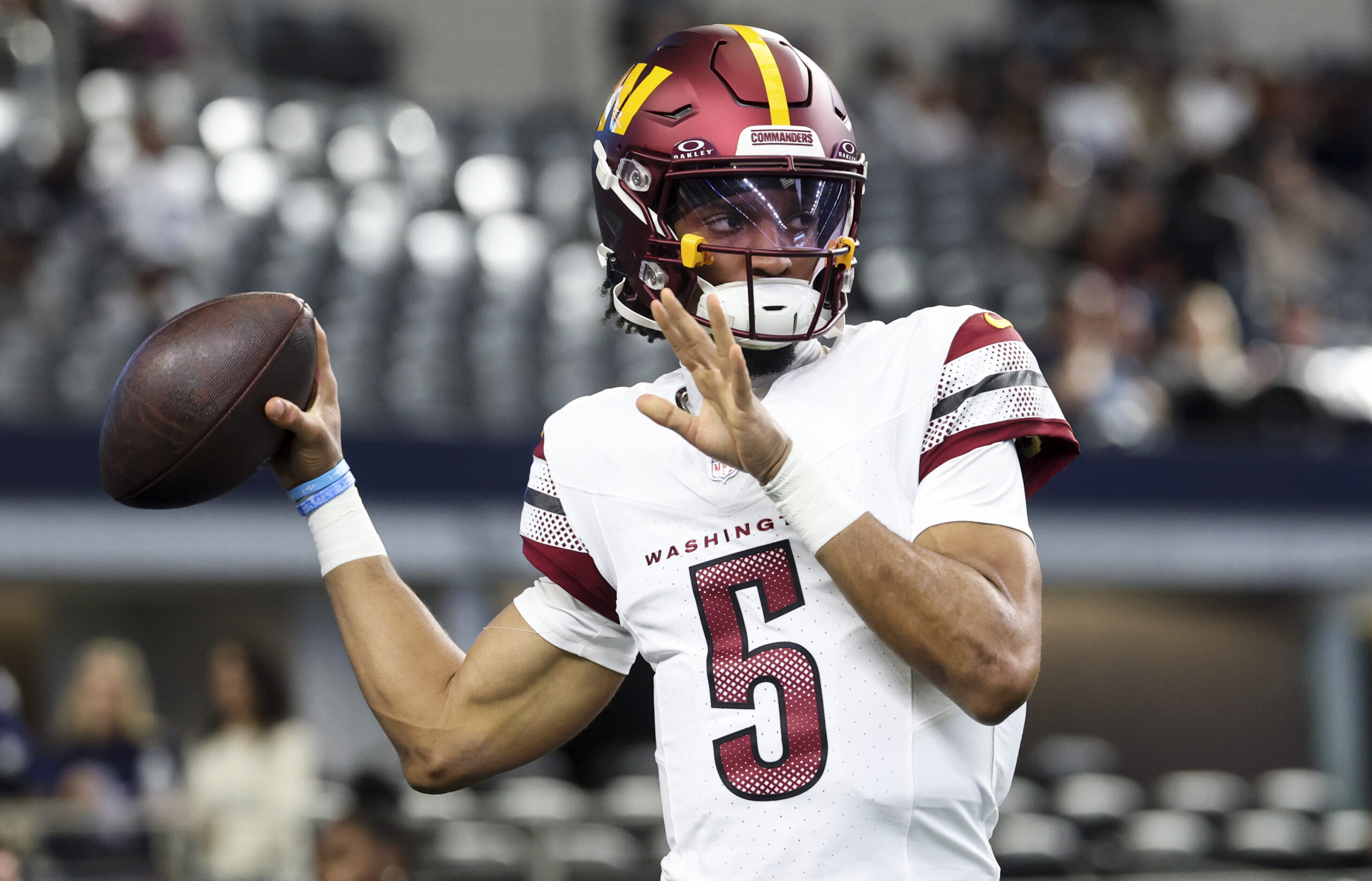NFL Analysis
1/6/25
18 min read
1st & 10 Week 18: Detroit's Defense, Bucs Clinch & Regular Season Awards

We made it. The end of the regular season. The final playoff spots were clinched, and we're all set for the postseason. This week, we'll look at the Sunday night game, a division winner, the draft order, and then get to some regular season awards.
Each week, 1st & 10 will bring you a Monday morning an in-depth breakdown of everything you need to know from Sunday’s slate of games. We’ll fill this column with stats, film, and plenty of words to keep you covered on anything you might have missed or want to dive deeper into from Sunday.
All stats provided by TruMedia unless noted otherwise
1st & 10 NFL Week 18
1. Detroit's Defense Gets THe No. 1 Seed
The regular season finale between the Detroit Lions and Vikings to determine the No. 1 overall seed was supposed to be a high-scoring matchup. It was not that. Instead, the depleted Detroit defense was the star in a 31-9 victory that clinched the NFC North and a first-round bye.
Detroit’s defensive effort was clear from the start as Minnesota struggled to find a rhythm early in the game. Sam Darnold, who had been good under pressure for much of the 2024 season, looked rattled and rushed while the Lions stuck to their aggressive game plan of blitzing and playing man coverage.
This was easily Darnold’s worst game of his Vikings tenure.

Even when the Vikings had open opportunities, the threat of the rush had Darnold missing easy and open throws. He was charted as inaccurate on 24.4 percent of his throws, easily his highest of the season. Midway through the third quarter, ESPN Research had him charted with eight overthrows, the second-most for a game in his career behind the "Seeing Ghosts" game.
When Darnold rushes, he misses high, and his process was all kinds of rushed throughout the game.
The Lions blitzed Darnold on 40 percent of his dropbacks, but Darnold had worse numbers on the plays without a blitz.

The blitzes that really worked were when the Lions went all-out in Cover-0. Detroit used a zero-blitz 14 times, the most for any team in a game this season, per Next Gen Stats. Darnold averaged -0.48 EPA per play with a 20 percent success rate.
A settled-down Darnold could have made this game much closer. There were open throws early in the game in the open field, and the Vikings could have had two touchdowns down in the red zone that failed on fourth down because Darnold was slow to process what was happening and passed up open receivers early in the play.
On the first, a fourth-and-3 with the Lions leading 7-0, Darnold had Addison open to the right side but didn’t throw it and instead tried to get outside the pocket and force a ball to Justin Jefferson.
Early in the third quarter, on a fourth-and-2 with the Lions up 10-6, Darnold had Addison open early, and then Jalen Nailor came open while the quarterback was seemingly looking in that direction before Darnold left the pocket to throw late to a covered Addison.
Detroit blitzed, but Darnold wasn’t in any immediate danger while passing up two open receivers.
Darnold’s hesitance also stemmed from the Lions disrupting the timing on downfield routes because of how aggressively they were playing man coverage. Per Next Gen Stats, the Lions played man coverage on 66.7 percent of Minnesota’s dropbacks, which was the second-highest rate for any team this season. Darnold was just 10-of-28 for 125 yards against man coverage and completed 1-of-9 passes against man coverage that lasted more than four seconds.
Amik Roberston, who has been the slot corner for most of the season, played across from Jefferson on 35-of-43 routes and played man on 25 of those. Jefferson had three catches for 54 yards on seven targets against Robertson in coverage.
Robertson was filling in for an injured Carlton Davis, but during the game, rookie Terrion Arnold was lost to a foot injury. X-rays were negative, according to Dan Campbell, but the severity of the injury is still unclear — big for a defense that has already lost so many key pieces throughout the season.
Twenty-two percent of Darnold’s throws went into a tight window of a yard or fewer of separation, his third-highest rate of the season. His -15.7 percent completion rate over expectation was easily his worst of the season, with his second-worst figure at -9.2 percent in Week 5.
Offensively, the Lions continued to do what they’ve done throughout the season. Jared Goff found the holes in the coverage and had a 60 percent success rate. Jahymr Gibbs had four touchdowns and was the dynamic spark for this unit.
The increased usage for Gibbs with David Montgomery out has not slowed down the efficiency and effectiveness of his touches. However, it was a test of will to keep the ground game going because the Vikings were on top of it for much of the first half.
In that first half, Gibbs had 12 carries but just an 8.3 percent success rate — the lone success being a touchdown run — with 3.5 yards per carry and a 25 percent stuff rate. But in the second half, he had a 63.6 percent success rate on 11 carries with 8.8 yards per rush, and 27.3 percent of his runs went for 10 or more yards.
He’s held up with more carries, and his speed has been tougher for defenses to catch up to, no matter where he gets the ball. While we often think of body blows as being what can break open a run game late in a game, Gibbs has game-changing speed that is just as much of a threat when the defense gets tired.
On a fourth-and-2 from the 9-yard line late in the third quarter with the score still just 10-9, Gibbs released from the backfield and put Andrew Van Ginkel in an impossible spot in coverage. Gibbs blew past him for a touchdown.
Gibbs has been an angle-eraser in space, and he’s gotten more opportunities to play Detroit’s style of bully ball by pounding through the middle as he did on his fourth touchdown.
This was a huge win for Detroit, a team that would benefit the most from a bye and home-field advantage through the playoffs. Per FTN’s playoff odds, the Lions sent to about 13.1 percent odds to win the Super Bowl with the win, as opposed to four percent had they lost.
The defensive effort was also a positive sign for a unit that had given up at least 30 points to three of their past four opponents.
Minnesota will now have to recoup and head to Los Angeles to play the Rams on Monday night in a rematch of a Week 8 game in which the Rams won 30-20.

2. The Bucs Won the NFC South
The only other division that needed to be decided in the season’s final week was the NFC South. The Tampa Bay Buccaneers needed a win against the New Orleans Saints to get in, and while the game was shaky for a bit, Tampa Bay got a 27-19 win.
Tampa Bay came into this game with a plan to screen the Saints to death. The Saints were ready.
On throws at or behind the line of scrimmage, Mayfield averaged -1.05 EPA per play and completed just 4-of-7 attempts for -10 yards. The Buccaneers have been one of the best screen teams in the league, but the Saints did whatever they could early to get bodies in the way of those plays.
Eventually, that opened up, and the Buccaneers threw down the field more often in the second half.

Mayfield was still chaotic in the pocket but in a more positive way. He made some big scrambles, and his movement was often going forward instead of backward, which is when he’s gotten himself into some trouble this year and throughout his career.
On a touchdown throw to Payne Durham in the third quarter, Mayfield stepped up into open space against pressure and bought time to find Durham in the back of the end zone.
Mayfield had a 10 percent pressure-to-sack rate, which was his third-lowest of the season. The comfort in moving up in the pocket also showed in his fourth down strike to Jalen McMillan for a touchdown that gave the Buccaneers the lead.
Then Mayfield had a 28-yard run on a third-and-14 that helped the Buccaneers ice the game.
Once the game was handled, there was only one question — would Mike Evans get to 1,000 yards receiving on the season? After a Bucky Irving touchdown gave Tampa Bay a 27-19 lead with 1:51 remaining — a heads-up play by Mayfield to flip the ball back to Irving while under pressure — it looked like Evans would be left five yards shy of the mark.
But the Saints turned the ball over on downs and gave the ball back to the Buccaneers with 36 seconds left.
Instead of taking a knee, the Bucs ran a play — one everyone knew was going to Evans. This is where confidence in offensive coordinator Liam Coen should soar. Instead of a screen hoping for yards after the catch, Coen got Evans open, again on a play that had a zero percent chance of going anywhere else.
Not only did that catch get Evans 1,000 yards for the 11th straight season, but it also triggered a $3 million incentive. Not bad.
The Buccaneers' offense could be a threat in a playoff game. This unit finished fourth in EPA per play for the season. It'll get to host the Washington Commanders, a team that finished the season 24th in EPA per play on defense. That could be a playoff game that turns into the shootout we expected from Lions vs. Vikings.
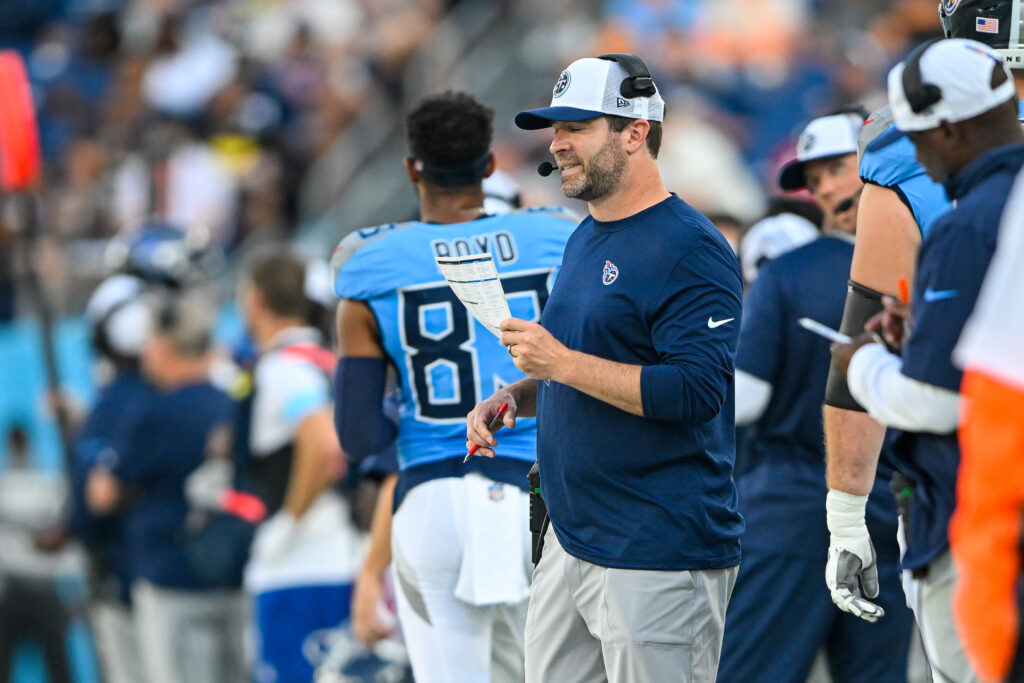
3. The Titans Get the No. 1 Pick
The Tennessee Titans went into this season adding pieces to see if the quarterback would be someone worth building around. Will Levis finished the season with the worst EPA per play of any quarterback who was passer-rating qualified (-0.15). His sendoff was a 1.2 QBR, which just beat out the Week 17 performance from Aaron Rodgers for the worst mark in a game this season.
Tennessee is in a strange place. The veteran defense was good early in the season, but that quality was wasted while the offense couldn’t consistently put a game together. Head coach Brian Callahan was seen visibly frustrated with Levis on several occasions, and the 2023 second-round pick was eventually benched for Mason Rudolph. The Titans then lost six in a row to clinch the top pick.
There wasn’t much of an offensive structure that made things easier on the quarterback, but Levis did not do much to help himself either — ridiculous turnovers aside, he couldn’t escape the fatal flaw of not having a feel for pressure.
This is a strange roster, with most of the 2024 singings still under contract and four players with cap hits of $20 million or more in 2025, and two of those, Calvin Ridley and L’Jarius Sneed, are tradeable deals. The Titans also still have $61 million in projected cap space. The Titans could be as clean of a slate as they want to be, which could include the coach and general manager.


4. 2024 NFL MVP
- Lamar Jackson
- Josh Allen
- Joe Burrow
- Saquon Barkley
- Patrick Mahomes
There’s no right answer here.
Picking Jackson or Allen is not a slight to the other. This is about as close as a deserving MVP race could be between two of the league’s best quarterbacks. If either one of these seasons happened last year, they would have run away with the MVP voting. No one should be upset if either player wins.
Go down just about any metric, and these two are near even. There’s nothing that clearly separates these two.

Jackson does have an advantage in explosive plays, and that’s due to his willingness to throw to the intermediate middle of the field.
That’s a clear place where Jackson has thrown more often than Allen this season. Part of that comes from the scheme opening up that area better in Baltimore, but it’s also Jackson’s quick trigger to get the ball there.

It’s still difficult to make a strong case for either one, so we don’t have to waste too much time trying to do so.
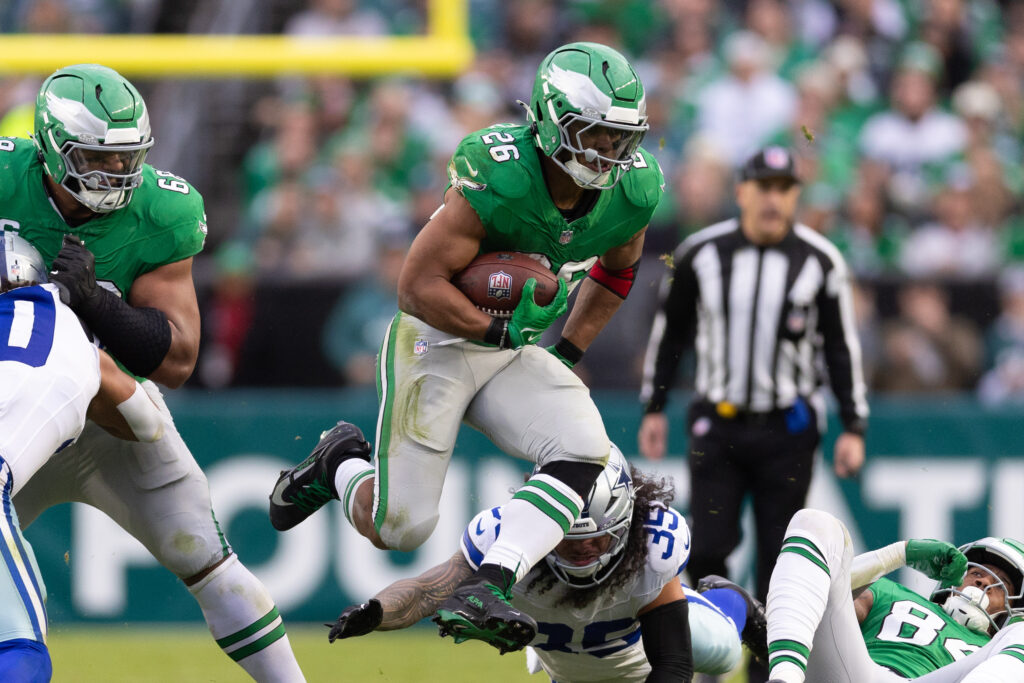
5. Offensive Player of the Year
- Saquon Barkley
- Ja’Marr Chase
- Justin Jefferson
This is a pretty clear winner for an award that now traditionally goes to the best or most impactful non-quarterback. Saquon Barkley hit a milestone number with 2,000 rushing yards, but this isn’t just a case for volume accumulation.
Barkley was often the engine who moved the Eagles' offense more than the other players in this category. He sat out Week 18 with a chance to break Eric Dickerson’s single-season rushing record, but through Week 17, Barkley led the league in rushing EPA and was one of the league’s most efficient runners. He was also one of the league’s most explosive runners, as he led the league in carries of 10 or more yards.
He took an advantageous situation between a good Eagles offensive line and got more out of it than other backs would have done. Barkley’s 1.6 rushing yards over expectation per rush was second among all running backs with 100 carries, behind only Derrick Henry, who jumped him in the regular season finale thanks to +4.4 rushing yards over expectation against the Browns.
Barkley was also the league’s best closer. He led all rushers in EPA in the fourth quarter and had a league-high 14 runs or 10 or more yards and seven runs of 20 or more yards in the final frame to go along with six fourth-quarter touchdowns.
Chase had a fantastic season in which he led the league in receptions, receiving yards, and receiving touchdowns. It also wasn’t just volume for Chase, as he finished eighth in yards per route run (2.42) among receivers with at least 200 routes run. No receiver was a bigger threat to create a big play out of something. Chase led the league in yards after the catch over expectation (294).
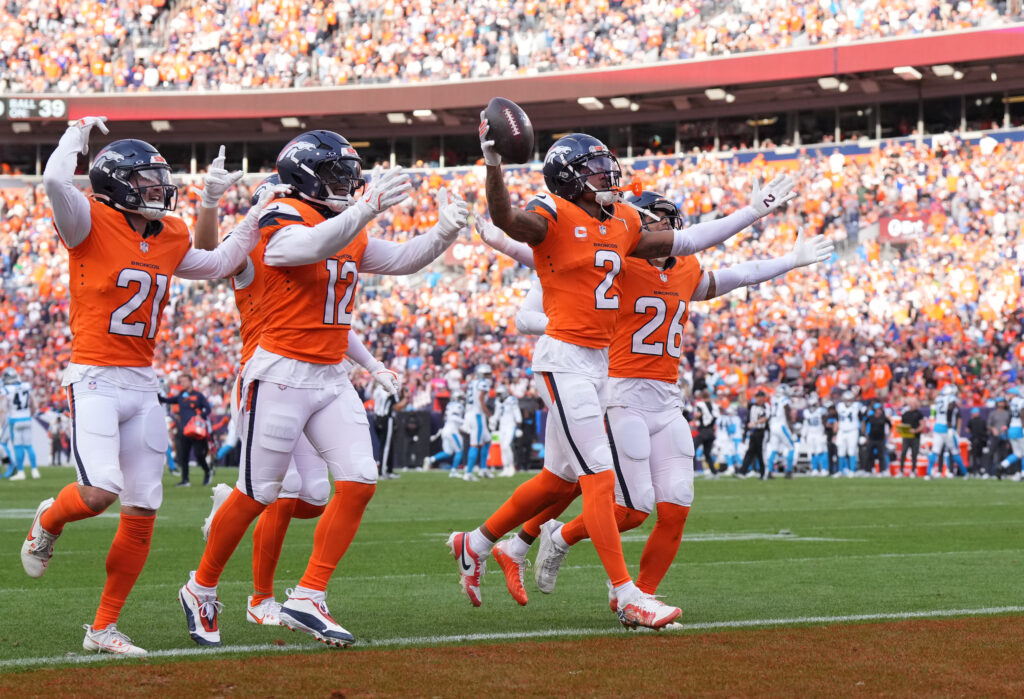
6. Defensive Player of the Year
- Patrick Surtain II
- Myles Garrett
- Trey Hendrickson
It’s difficult to really appreciate a standout cornerback season if it doesn’t come with gaudy raw stats such as interceptions or passes defensed. But Patrick Surtain II was just great in coverage while serving what might have been the most difficult coverage assignment in the league.
Surtain II spent most of his time covering opposing No. 1 receivers and did so with one of the highest rates of man coverage in the league (around 34 percent). He was first in adjusted yards allowed per coverage snap, which accounts for touchdowns and interceptions, and was one of the best cornerbacks at deterring targets, just eight percent of routes.
Top Cornerbacks By Adjusted Yards Allowed Per Coverage Snap

When the Broncos stuck him on a team’s top receiver, there was not a lot of receiving going on.
Being the best corner on the league’s best pass defense — the Broncos finished first in EPA per dropback — and a reason why so many other things work on that side of the ball is a pretty good resumè for Defensive Player of the Year.
Garrett and Hendrickson tied for the league lead in total pressures. Garrett was first in pressure rate, and Hendrickson was first in sacks while having virtually no help along the Cincinnati defensive line.
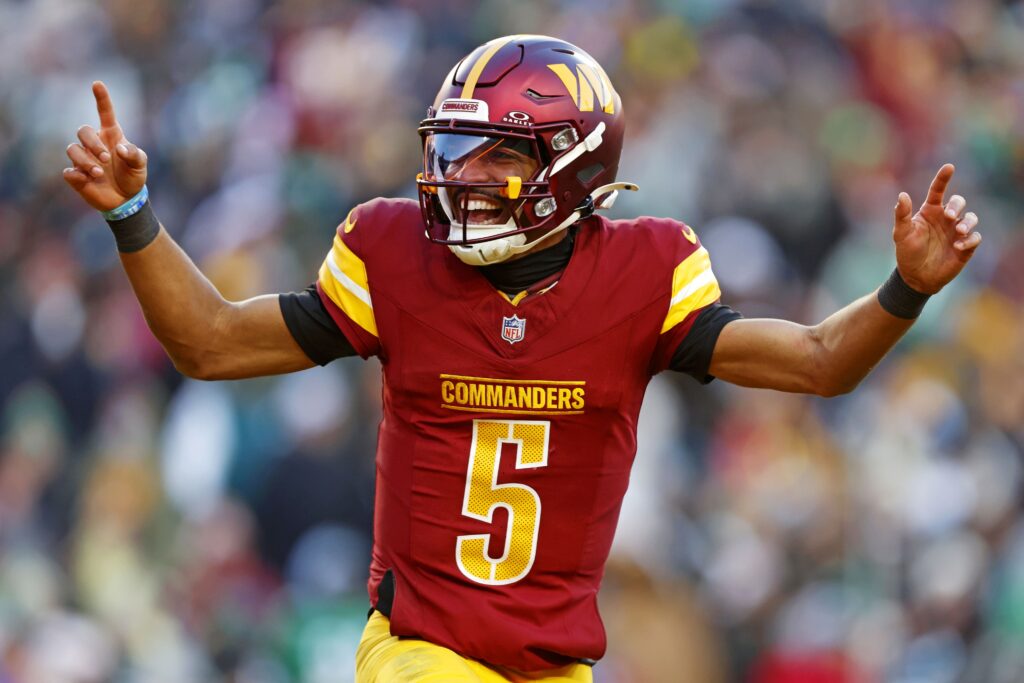
7. Offensive Rookie of the Year
- Jayden Daniels
- Brock Bowers
- Malik Nabers
We default to quarterbacks a lot for awards, especially MVP, because of how it’s framed. But it’s hard to ignore how good of a rookie season Jayden Daniels had.
Even a few weeks ago, I would have leaned Bowers because of how impressive his rookie season has been. Bowers set the rookie record for total receptions (112) and eclipsed Mike Ditka’s long-standing record for receiving yards by a rookie tight end (1,194).
Bowers wasn’t just a great rookie tight end; he’s already one of the best at his position. On my hypothetical ballot, I had him as a second-team All-Pro. It's an incredible feat for a rookie to come in and immediately be one of the best players at his position.
But that’s also what we’ve seen from Daniels. The bar is obviously much higher for quarterbacks to enter the top tier, but Daniels finished seventh in EPA per play among quarterbacks this season with multiple games and moments of single-handedly bringing Washington to victory.
His 0.16 EPA per play is also one of the best we’ve seen from a rookie quarterback in the past 25 years. Daniels is sixth on that list behind Robert Griffin III, Dak Prescott, Ben Roethlisberger, Russell Wilson, and Matt Ryan.
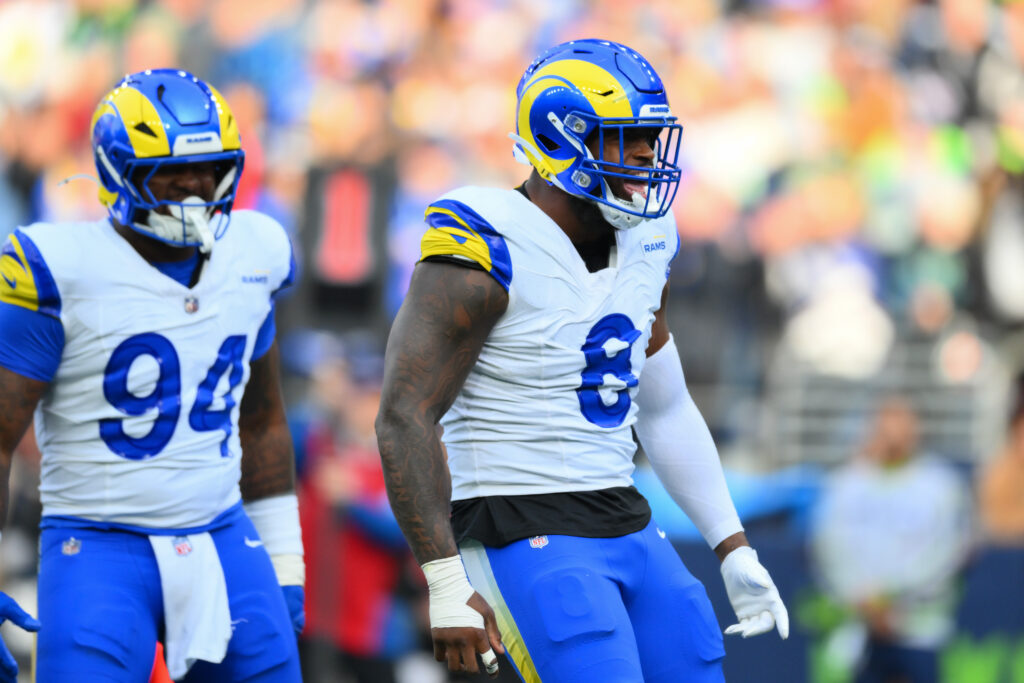
8. Defensive Rookie of the Year
- Jared Verse
- Quinyon Mitchell
- Chop Robinson
Jared Verse came in and immediately became one of the league’s most impactful pass rushers. Although he only had 4.5 sacks, that doesn’t come close to defining his season.
He had 77 pressures, 10 more than Micah Parsons had as a rookie. That figure was fourth in the league this season. Verse also had 36.7 of the Rams’ pressure, which was the third-highest pressure share in the league behind Trey Hendrickson and Nick Bosa.
Verse was 12th in ESPN’s pass rush win rate while he was double-teamed on 23 percent of his pass rush opportunities. The only edge rushers in the top 20 with higher double-team rates were Micah Parsons (30 percent) and Myles Garrett (27 percent).
With Verse and Quinyon Mitchell, there’s also a case to be made for fellow rookies Braden Fiske and Cooper DeJean. Both the Rams and Eagles struck gold in doubling up at a position group in this draft and getting two key pieces to help shape the defense.

9. Coach of the Year
- Dan Campbell
- Kevin O’Connell
- Matt LaFleur
The top two were switched heading into Sunday night, but it’s hard not to reward Campbell for the job he’s done getting the Lions to the top seed in the NFC, given everything Detroit went through last season.
For Campbell to have been up on the podium after last year’s NFC Championship Game and telling the media how he explained to the team that it’s no guarantee they get back to that spot and then follow it up with the season they just had is a testament to how Campbell kept this team together.
Campbell trusts both of his coordinators to do what they do, and he has trust in his team, easily leading the way in fourth down aggressiveness, which has often led to more points.

O’Connell would also be well-deserving of this award, given how the Vikings played this season. No one expected Minnesota to finish the season with 13 wins, and O’Connell’s offensive scheme is a huge reason why.
Even when it was apparent in the preseason that the offensive system could help whoever was at quarterback, this level of success was never the imagined result.
10. Thank You
I’d like to end this final regular season edition by saying thank you to anyone who read 1st and 10 this season.
It’s cool that so many people seek something like this out on a Monday morning. It takes a lot to get this done on Sunday nights, so it’s incredibly rewarding to see the support this column has gotten. Thanks to Ian and Dante for editing all of these words every week.
The regular season is over, but there’s still a lot to be done — it’s playoff time.


